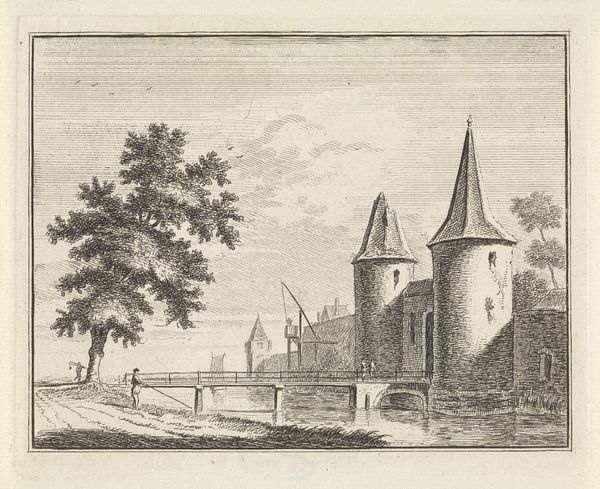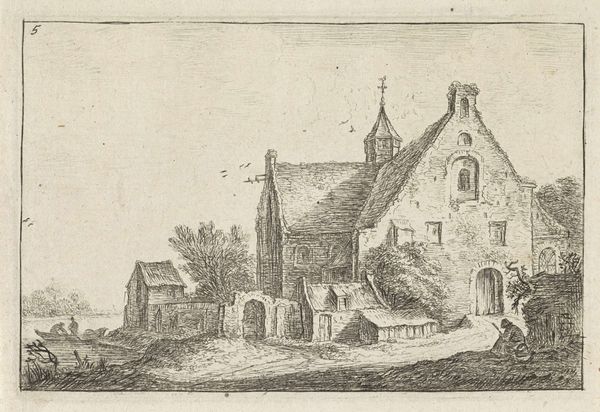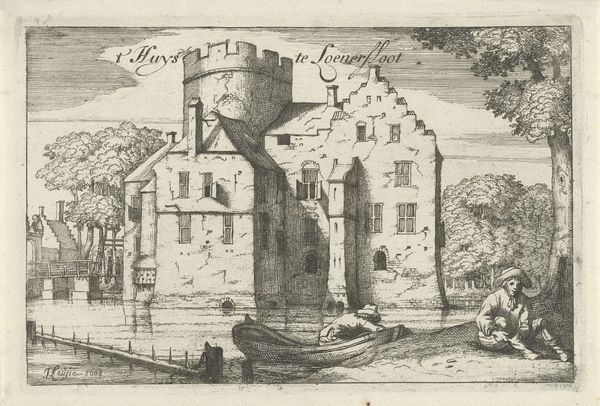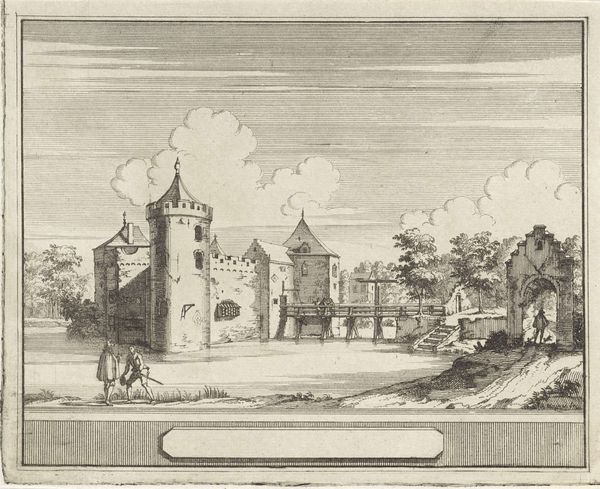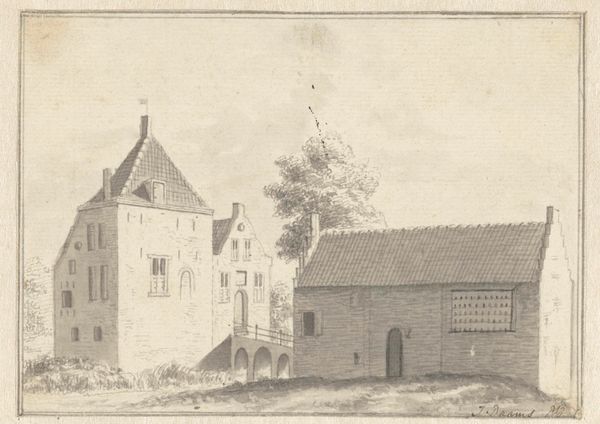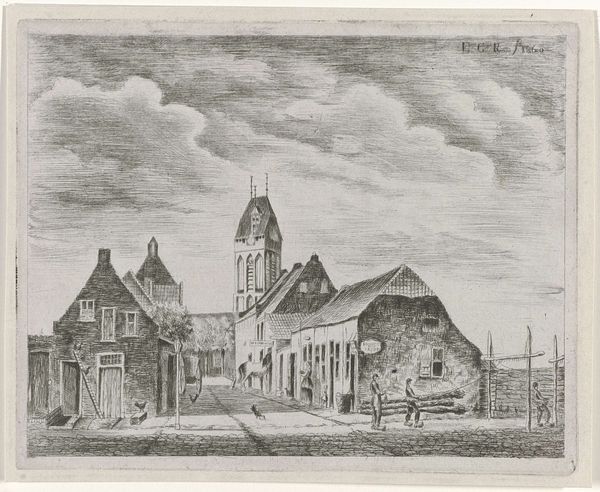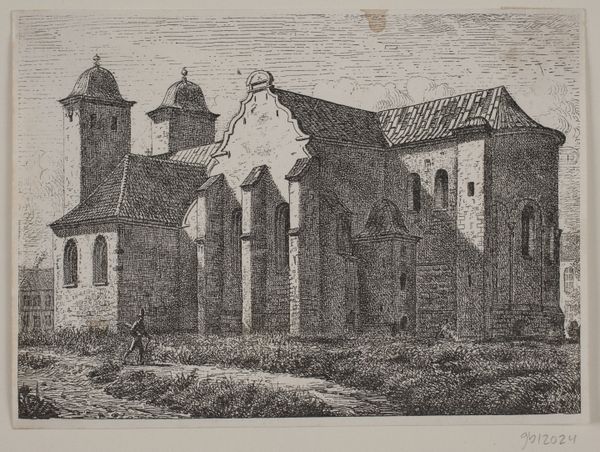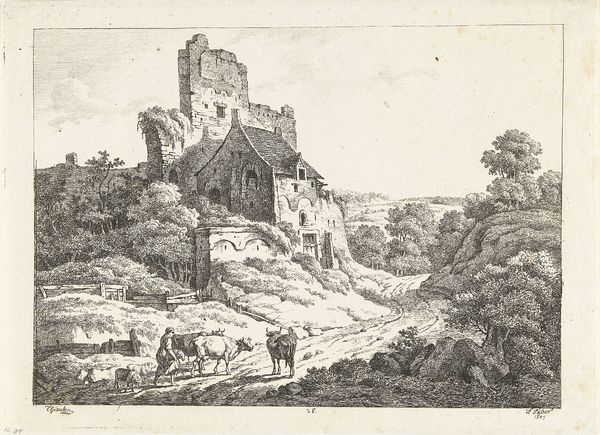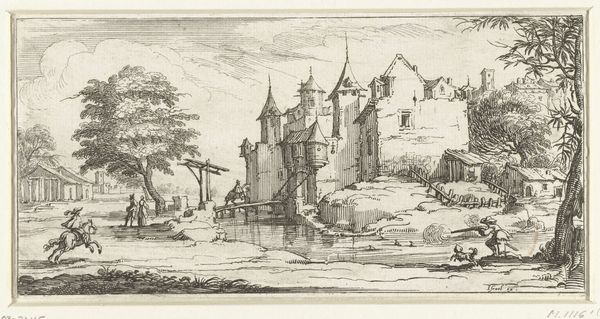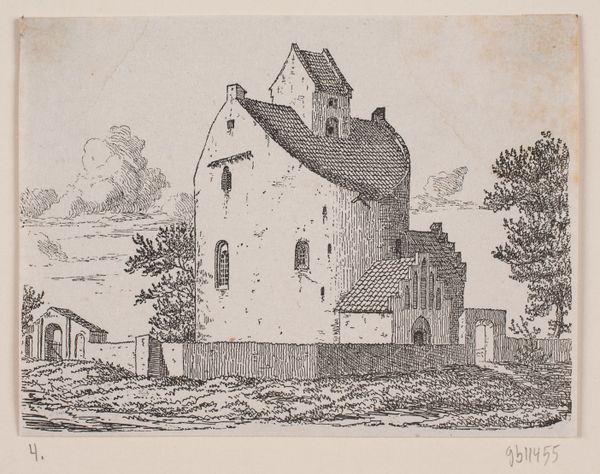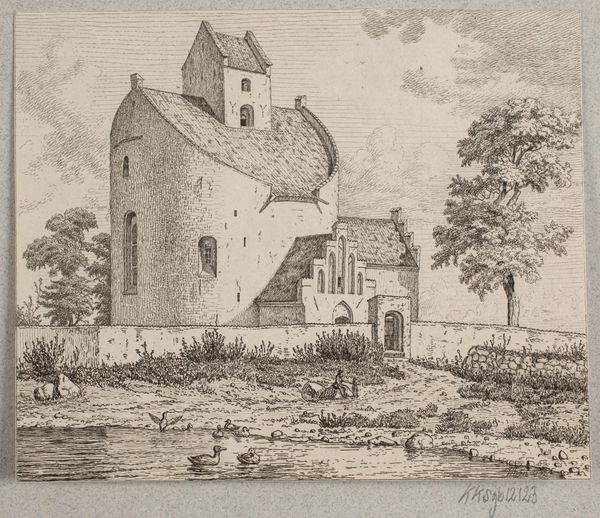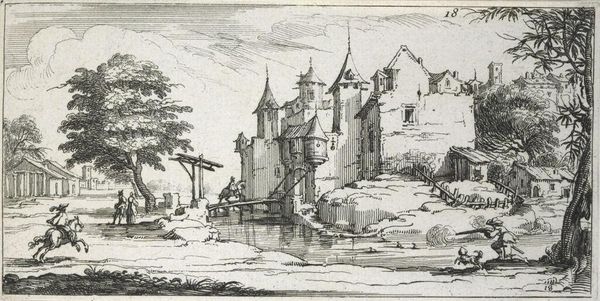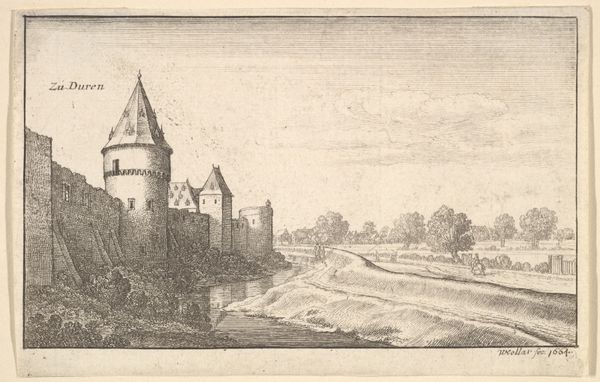
print, engraving
#
dutch-golden-age
# print
#
pencil sketch
#
landscape
#
cityscape
#
engraving
Dimensions: height 121 mm, width 198 mm
Copyright: Rijks Museum: Open Domain
Curator: Here we have a Dutch Golden Age print, an engraving titled "Slot te Abcoude," which translates to Abcoude Castle. It's attributed to Claes Jansz. Visscher and dates from around 1596 to 1630. Editor: My first impression is of a carefully constructed world, despite its sketch-like quality. The landscape, castle, even the tiny figures... they all possess a sort of quiet, self-contained energy. It’s meticulously rendered. Curator: Yes, the details are remarkable, aren't they? It's a classic example of the period's interest in both topographical accuracy and symbolic representation. Look closely at the castle itself, how it dominates the scene but doesn't quite overshadow the everyday life around it. The figures are integral. Editor: What stands out for me is the dichotomy of grandeur and the mundane. The imposing castle with its protective moat, contrasted with those figures strolling with their dog, almost like it's a park. It lessens the anxiety you’d expect from a fortress. I'm also wondering, why printmaking? Was it simply a way of circulating such images more widely? Curator: Precisely. Printmaking allowed for the dissemination of visual information about places and properties, shaping public perception and, to some extent, defining the identity of the Dutch Republic. And more subtly it reinforced the structure of power. Owning prints like this implied a certain level of wealth and social status. To view this artwork now, it invokes a sense of distance through time. The scene itself possesses qualities we recognize—the imposing edifice as protection for the mundane, but society is never at equilibrium and so anxieties arise in all eras. Editor: So, more than just a landscape, it's a cultural snapshot, a way of conveying power dynamics. Seeing this reminds us how our constructed environments continuously broadcast narratives about ourselves. That is really compelling. Curator: Indeed, it is a testament to how images, even seemingly simple ones, carry layers of meaning that resonate through time, revealing much about the society that produced them. Editor: I will now look at this engraving in a different light, realizing how skillfully it operates to cement certain aspects of Dutch culture into collective visual memory.
Comments
No comments
Be the first to comment and join the conversation on the ultimate creative platform.
